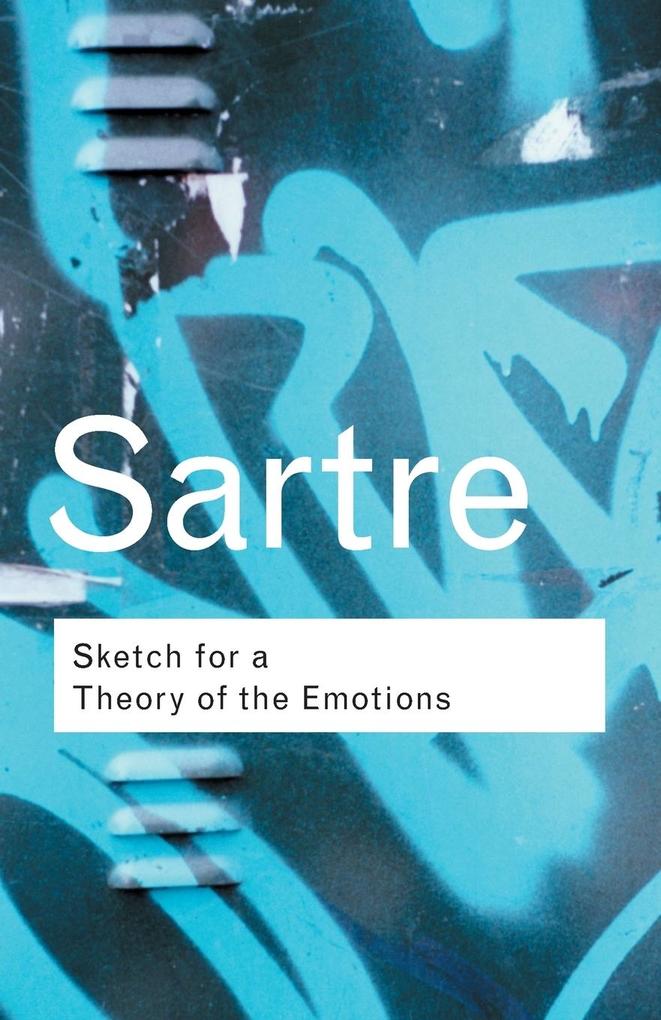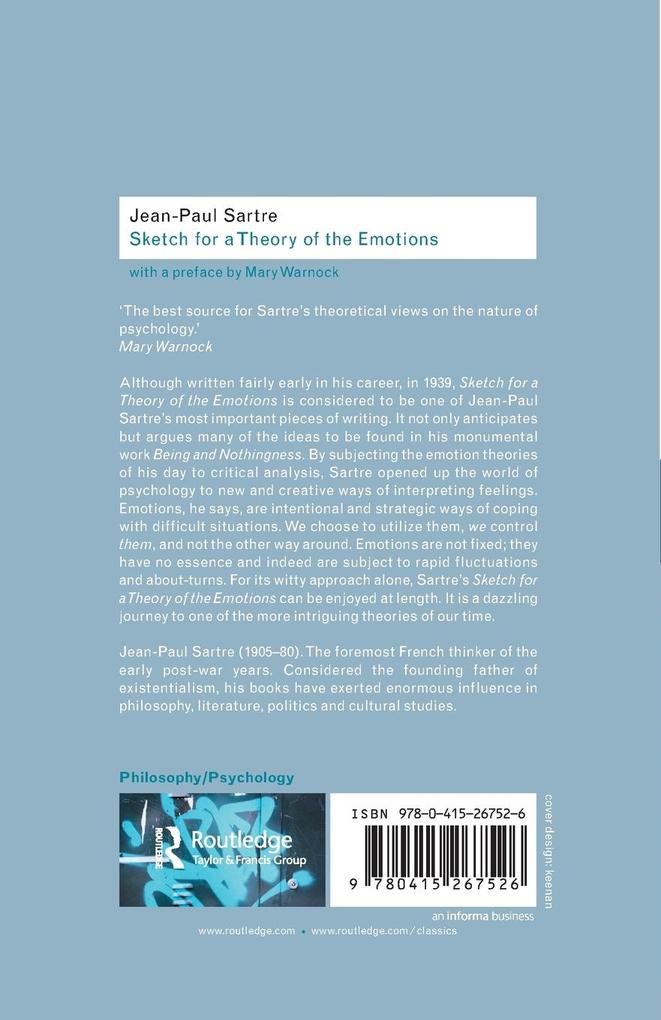
Zustellung: Mo, 07.07. - Do, 10.07.
Versand in 5 Tagen
VersandkostenfreiBestellen & in Filiale abholen:
Although written fairly early in his career, in 1939, Sketch for a Theory of the Emotions is considered to be one of Jean-Paul Sartre's most important pieces of writing. It not only anticipates
but argues many of the ideas to be found in his famous Being and Nothingness. By subjecting the emotion theories of his day to critical analysis, Sartre opened up the world of psychology to new and
creative ways of interpreting feelings. Emotions are intentional and strategic ways of coping with difficult situations. We choose to utilize them, we control them, and not the other
way around, as has been posited elsewhere. Emotions are not fixed; they have no essence and indeed are subject to rapid fluctuations and about-turns. For its witty approach alone, Sartre's Sketch for a Theory of the
Emotions can be enjoyed at length. It is a dazzling journey to one of the more intriguing theories of our time.
but argues many of the ideas to be found in his famous Being and Nothingness. By subjecting the emotion theories of his day to critical analysis, Sartre opened up the world of psychology to new and
creative ways of interpreting feelings. Emotions are intentional and strategic ways of coping with difficult situations. We choose to utilize them, we control them, and not the other
way around, as has been posited elsewhere. Emotions are not fixed; they have no essence and indeed are subject to rapid fluctuations and about-turns. For its witty approach alone, Sartre's Sketch for a Theory of the
Emotions can be enjoyed at length. It is a dazzling journey to one of the more intriguing theories of our time.
Inhaltsverzeichnis
Introduction 1. Assessing a Nuclear Energy Revival: the Drivers 2. Assessing the Nuclear Revival: the Constraints 3. Assessing the 'Revival' 4. The Current Status of Global Nuclear Governance - the Nuclear Safety Regime 5. The Current Status of Global Nuclear Governance - Nuclear Security and Nonproliferation 6. Implications of the Nuclear Revival for Global Governance Conclusion
Produktdetails
Erscheinungsdatum
12. Oktober 2001
Sprache
englisch
Seitenanzahl
82
Autor/Autorin
Jean-Paul Sartre
Verlag/Hersteller
Produktart
kartoniert
Gewicht
98 g
Größe (L/B/H)
198/129/5 mm
ISBN
9780415267526
Entdecken Sie mehr
Bewertungen
0 Bewertungen
Es wurden noch keine Bewertungen abgegeben. Schreiben Sie die erste Bewertung zu "Sketch for a Theory of the Emotions" und helfen Sie damit anderen bei der Kaufentscheidung.










